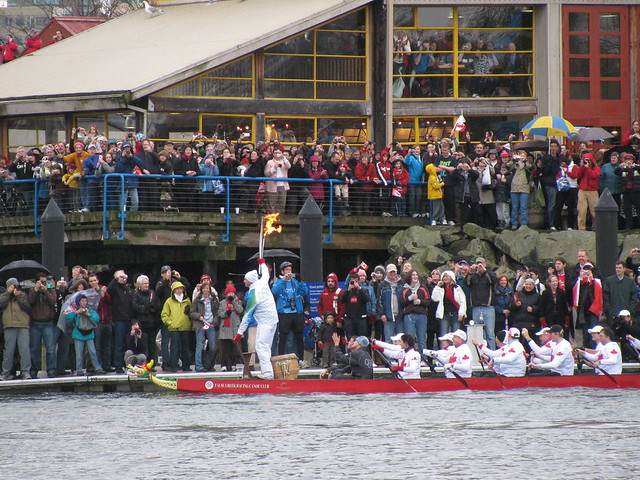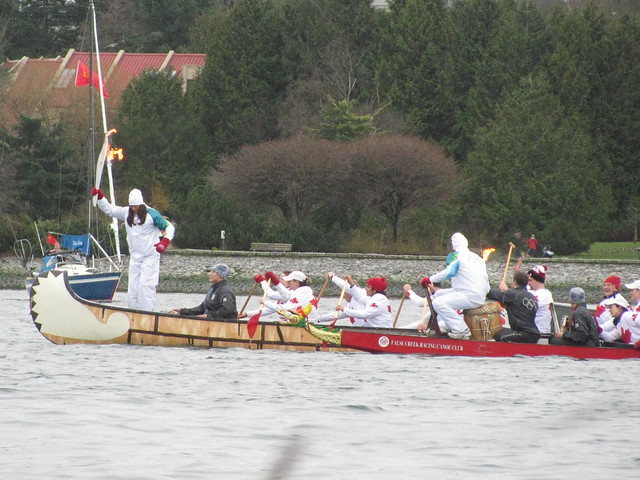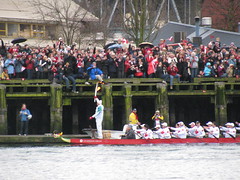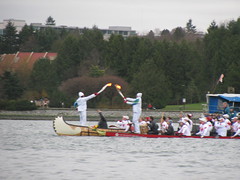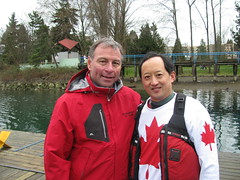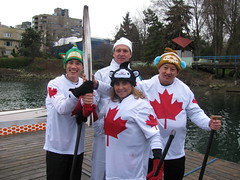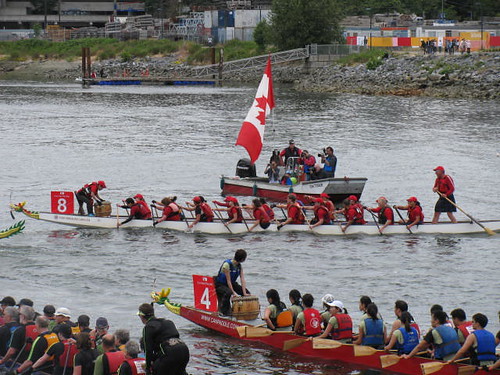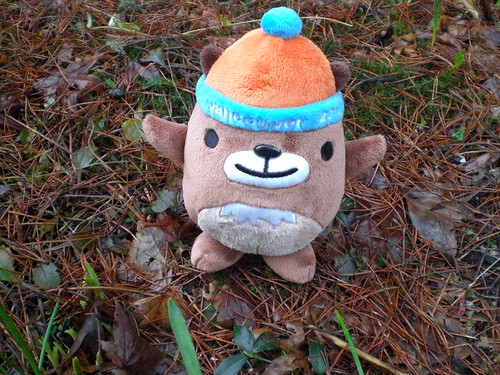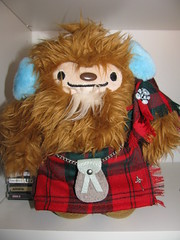
Quatchi, Miga and Sumi go to Scotland with Toddish McWong and Quatchi brings back a kilt
2009 was Homecoming Year for Scotland. It was an invitation to celebrate the 250th Anniversary of the birth of poet Robert Burns on January 25th, and went all through the year until November 30th St. Andrew's Day.
The year started with Visit Scotland CEO Philip Riddell bringing a special bottle of 37 year old Famous Grouse whisky to auction off at the 2009 Gung Haggis Fat Choy Robbie Burns Chinese New Year Dinner. By November, there was a photo exhibit at Scottish Parliament titled This Is Who We Are: Scots in Canada. It featured many Canadians of Scottish ancestry including Todd Wong aka Toddish McWong, who is not Scottish, but hosts the largest Burns Supper in Vancouver.
Exhibit creator Harry McGrath invited Todd to come attend the Homecoming Scotland finale weekend events and attend the Closing Reception for the exhibition.
Todd decided in the last days to attend the event, and quickly invited his friends Quatchi, Miga and Sumi to visit Scotland with him.
They arrived in Scotland, late on Saturday night, November 29th in Glasgow. They traveled to Edinburgh and visited many Robert Burns displays in the museums – but had lots of fun at the Scottish Parliament reception on St. Andrew's Day. After the reception finished, they retired to a pub called Jenny Ha's – but Todd had to return to do a radio interview back to Vancouver BC on CBC Radio.
These pictures are their adventures exploring Scotland from Nov 29th to Dec 5th., 2009.
http://www.flickr.com/photos/53803790@N00/sets/72157623081283070/
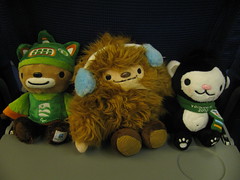
Sumi Quatchi and Miga are excited to travel on the airplane
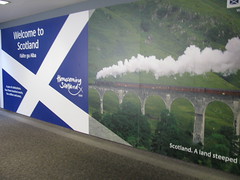
We are excited to see a Harry Potter train on the Welcome to Scotland sign
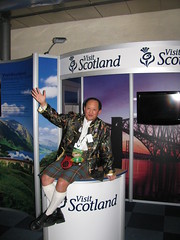
Todd and Sumi pose for a picture with the Visit Scotland display at the Scottish Parliment.
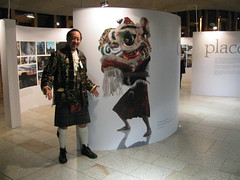
There is a life-size picture of “Toddish McWong” featured in the Culture section of the exhibit “This is Who We Are: Scots in Canada” at Scottish Parliament. Sumi attends the closing night reception with Todd.

Harry McGrath (the tall dapper feller) is the creator of the This Is Who We Are exhibit. Todd and Sumi pose with Harry's brother, niece and sister-in-law. Harry started off the project simply by taking photos of same-named places in both Scotland and Canada. You can find the project at http://www.culturalconnectscotland.com/
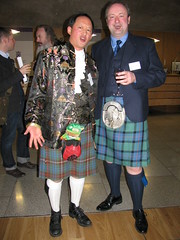
George Anderson is almost the only other fellow wearing a kilt (besidess Harry McGrath's brother-in-law and a junior piper). Todd had originally insisted on wearing a kilt every day in Scotland. But he quickly found out that many Scots don't have kilts, or only wear them for special occasions. After a few days in the Scotland cold Todd started sneezing and went back to wearing his jeans for the trip to Ayreshire.

Sumi makes a new friend at Jenny Ha's pub, where we all head off to following the reception.
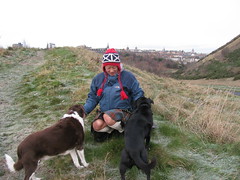
Todd makes friends with a border collie and a black lab, beneath Arthur's Seat in Hollyrood Park.
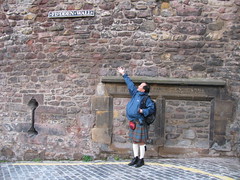
Todd visits the Telfer Wall – the old wall that used to surround Edinburgh city.
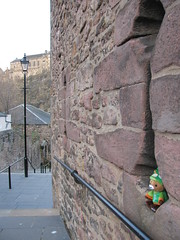
Sumi finds a seat in the Telfer Wall, Edinburgh Castle is in the distant background.
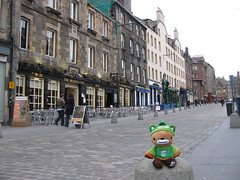
Sumi visits the pubs at The Grass Market. Apparently this is where all the hen and stag parties happen, but we didn't see any animals.
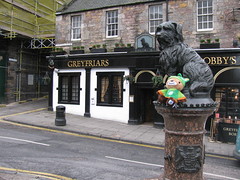
Finally!!! A monument to an animal! Sumi pays homage to the monument to Greyfriar's Bobby – the little Skye Terrier doggie that held a 14 year virgil, guarding his master's grave site, at the Greyfriar's kirkyard (church yard). http://en.wikipedia.org/wiki/Greyfriars_Bobby
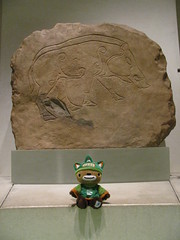
Sumi visits the National Museum of Scotland in Edinburgh. He really liked this ancient picture of a boar.
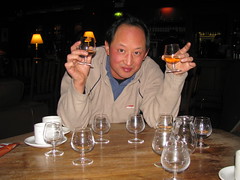
Todd went to The Vaults – Scotch Whisky Tasting Society, and drank Sumi, Quatchi and Miga under the table. They refuse to allow any of the pictures from that night to be published.
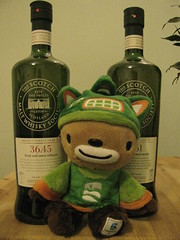
Sumi doesn't have as much as a hangover as the others, but still feels a bit green. He does agree to take a picture beside his two favorite single malt scotches from the tastings.
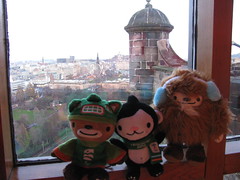
Off to the Edinburgh Castle. Sumi, Miga and Quatchi enjoy the view from the cafeteria. It's a very cold day so Miga decides to stay indoors, especially since she is still suffering a hang-over from the night before.

Sumi poses on a ancient cannon at Edinburgh Castle.
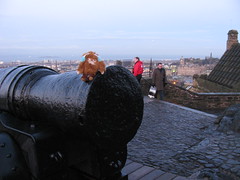
Not to be outdone, Quatchi enjoys the view from a cannon at Edinburgh Castle too!

After the castle visit, we go to the Scotch Whisky Experience and meet poet Robert Burns. Quatchi and Sumi enjoy the poems of Burns, especially A Man's A Man For A' That, and To A Mouse. Miga is feeling much better and can actually stand the sight of whisky again. She excitedly seats herself on Robbie's shoulder.

It's been a good day visiting Old Edinburgh. Miga, Quatchi and Sumi enjoy the music and company at #1 High Street, at The Tass.
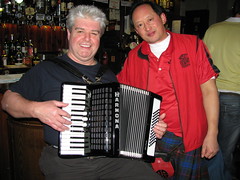
Todd always seems to find accordions somewhere. A whole bunch of local musicans meet at The Tass every Wednesday Night. Todd and this fellow talked and talked about accordions and Robert Burns.
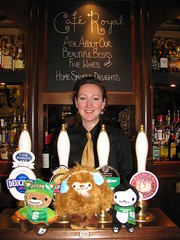
Jennifer works at The Cafe Royal, the oldest and best Victoria pub in Edinburgh. She is originally from Victoria BC, and was very happy to meet some fellow BCers.
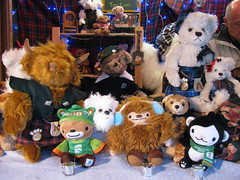
Sumi, Quatchi and Miga met some new friends including a Highland Cow, and a local named Teddy McBear. They tried to help fit Quatchi with a kilt. This was a great little shop at the Christmas fair at The Princes St. Park beside Waverly Train Station.
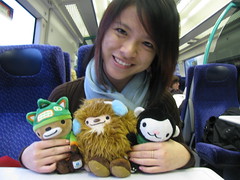
Sarah is a student at University of Edinburgh. She is originally from Singapore/Malaysia and spoke English the best of any other Asians that we met. Probably because she grew up speaking English along with Malaysian and Chinese.
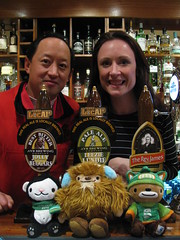
We met Vicky at her father's hotel and restaurant in Ayr. It's called the Glen Park Hotel with bar and restaurant. Vicky actually lived in Vancouver's Kitsilano neighborhood for a year.

We also went to the Two Dugs pub in Ayre. Catherine was our bar server and she helped give us answers for that night's weekly Trivia Contest run by a fellow naed Pat. Quatchi is emailing to Catherine.

The Big Day! We finally go visit Burns Cottage. This is the birthplace of Robbie Burns just 250 years ago on January 25th 1759. It is Burns' birth that is the inspiration for Homecoming Year Scotland. The Alloway Post Office is in the background, across the street.
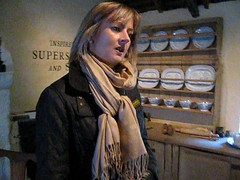 click here for video
click here for video
We were very lucky to have a short tour of the brand new renovated displays inside Burns Cottage with Burns Heritage Park’s Manager Caroline Glenn. The new displays at Burns Cottage opened to the public on Nov. 30th, St. Andrew's Day with a presentation by First Minister Alex Salmond (whom we saw at the This Is Who We Are reception).
Caroline Green says on the Burns Heritage Park website:
“The Living History school visits allow school children to get a real
sense of Robert Burns’ life and to hear expert commentary on his work.
It’s a pleasure to be able to continue to educate the public and Robert
Burns even 250 years after he was born and the new Robert Burns
Birthplace Museum will ensure that this tradition continues for many,
many years to come.”
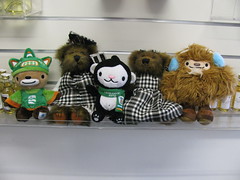
Inside the Burns Cottage gift shop, we made friends with “Rabbie Bearns” and his partner “Jean Armour”

Sumi, Quatchi and Miga go to the Burns Monument Park and visit the Brig O'Doon – made famous in the Burns poem Tam O'Shanter. It is on this bridge that Tam O'Shanter excapes the ghosts who can't catch him but only the tail of his grey mare.

We discover a Chinese restaurant around the corner from the Burns statue in Ayr. Todd immediately starts planning to create a future Gung Haggis Fat Choy Robbie Burns Chinese New Year Dinner for some time in the future. The waiting staff is Caucasian – but the owner is Chinese from Northern China near Shanghai. She tells Todd that for some reason, the Scots people don't seem to like eating seafood. And they complain if you include the heads and tails of chicken, duck and fish on the plates.
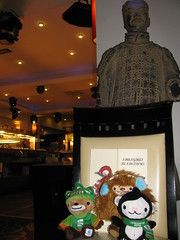
We hang out, while Todd speaks with the owner. We can't stay for dinner because Todd forgot his passport in Edinburgh at the Cafe Royale, and we have to leave.

On our last day of Scotland we have a traditional breakfast with marmalade. Todd remembers reading all about marmalade from books about Paddington the Bear.
